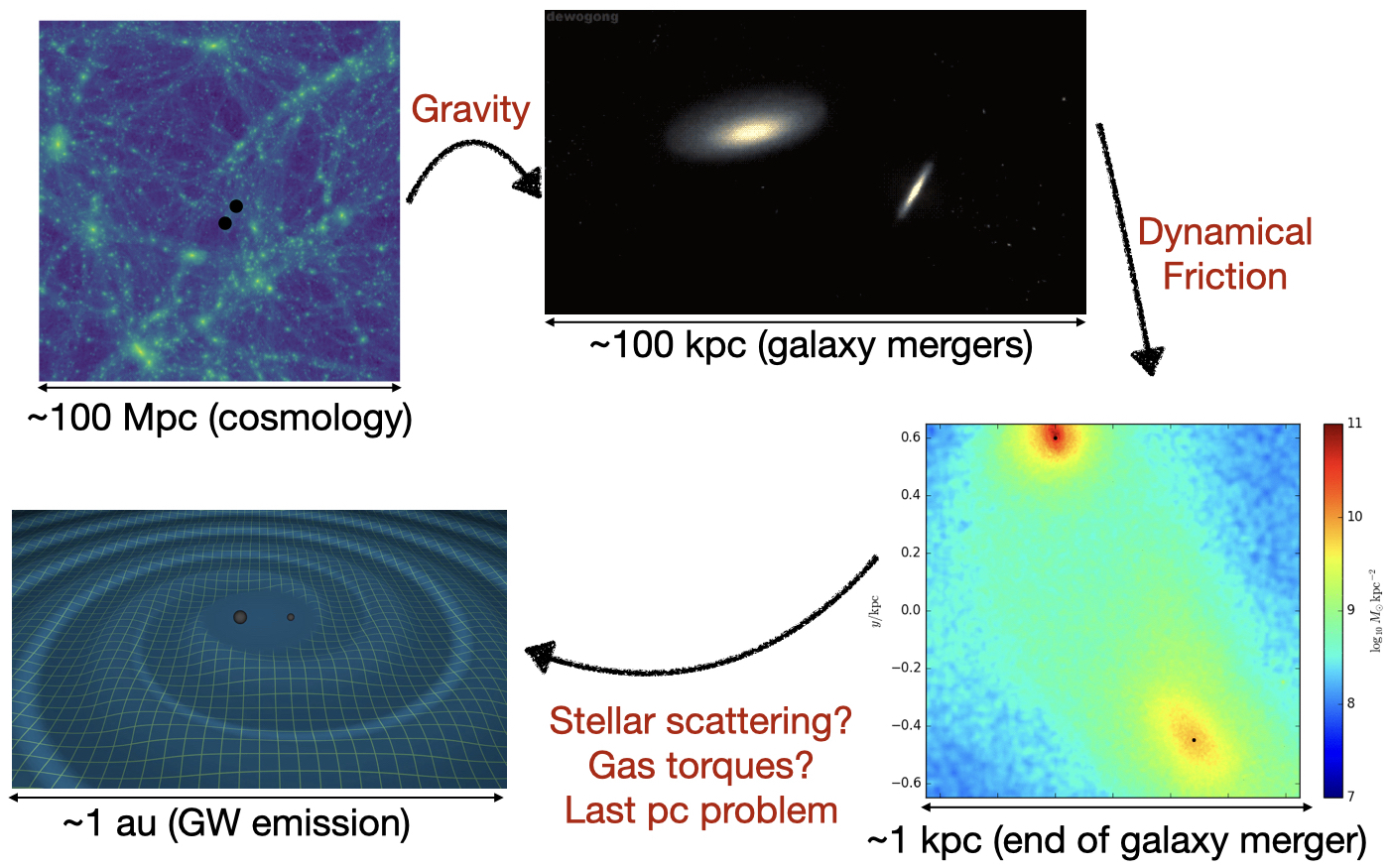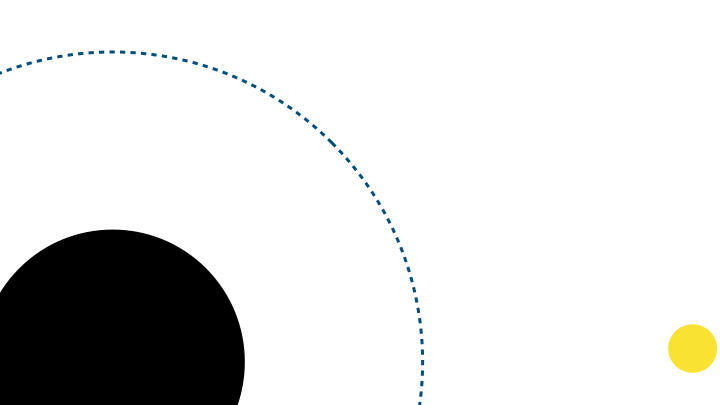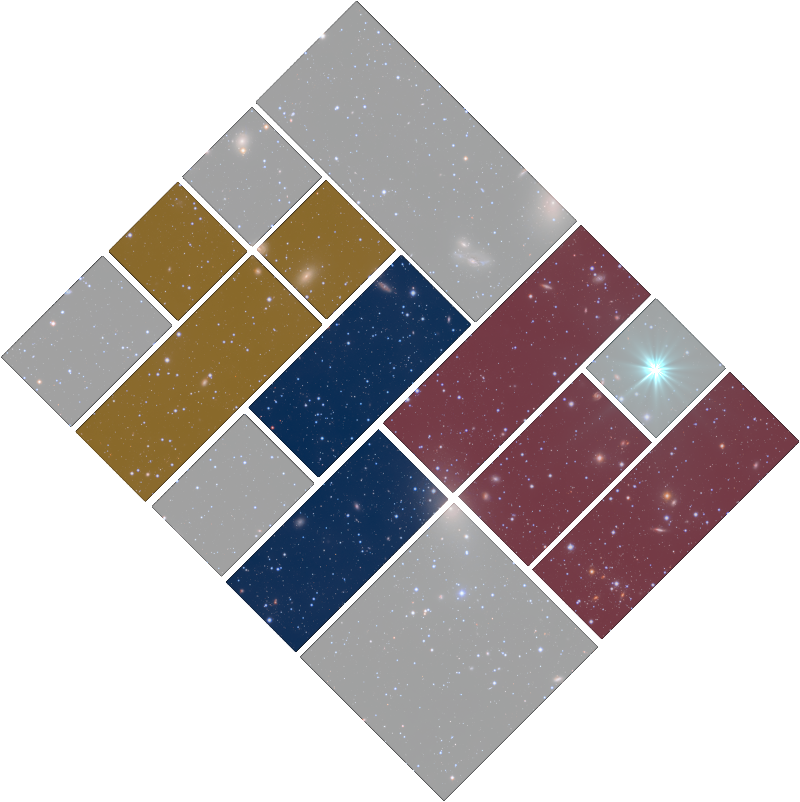Research
Here is a brief summary of the various topics I work on.

Formation of black hole binaries
My contributions to this topic arehere.
Gravitational waves emitted by supermassive black hole mergers will be detected by LISA. However, it is still unclear how frequently black holes merge. Indeed, this is a very long process which can lasts billions of years and occurs on a wide range of scales.
It starts on cosmological scales (Mpc, upper left) with the formation of two black holes in two separated galaxies. Newtonian gravity may lead these two galaxies to merge (kpc, upper right). Dynamical friction drags the two black holes at the center of the galaxy remnant, possibly forming a binary (pc, lower right). Stellar scattering and gas torques may shrink the binary until black holes are close enough and the dynamics is dominated by General Relativity (μpc, lower left).
As a member of the LISA consortium aiming at preparing the LISA mission, I have particularly focused on the dynamical friction phase. I am the leader of the Dynamics part of the LISA White Paper, a review which summarize the different recent theoretical breakthrough and challenges which have to be faced before the spacecraft is launched.

Tidal Disruption Events
My contributions to this topic arehere.
If a star gets too close from a black hole, it is disrupted as self gravity becomes weaker than tidal forces. This results in a luminous event known as a tidal disruption event, some of which have already been observed. These events allow us to observe dormant black holes, inlcuding the population of intermediate mass black holes with masses between thousands to millions of Suns.
I am particularly interested in the rates of tidal disruption events, that is estimating how many events can we observe per year, and how does this number depends on the underlying properties of black holes.

Observing transient events with the Young Supernovae Experiment
My contributions to this topic arehere.
The Young Supernovae Experiment (YSE, see website) is a survey which observes the same patch of the sky every 3 days. If the pictures differ, something may have happened in this direction!
I initially joined this program to be aware of the discoveries of tidal disruption events, but I am now a core member. As such, I participate to the survey by doing the vetting as well as spectral reduction and classifications of events.